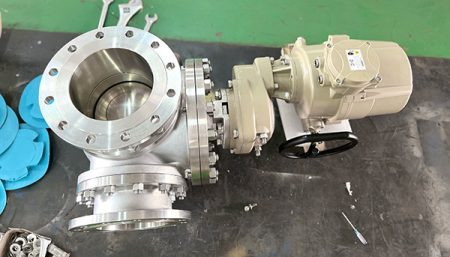
Choosing between a gate valve vs ball valve depends on your specific needs. Ball valves are ideal if you need to shut off flow quickly or operate the valve frequently. Gate valves, on the other hand, are better suited for large pipes and situations where the valve is not opened or closed often. Many people consider ball valves more reliable for stopping flow because they close quickly and provide a better seal compared to a butterfly valve or diaphragm valve. The table below highlights the key differences between gate valves and ball valves.
| Practical Aspect | Gate Valve | Ball Valve |
|---|---|---|
| Speed of Operation | Slow, requires multiple turns | Fast, requires only a quarter turn |
| Sealing Performance | Can wear out and leak | Seals very well, no leaks |
| Maintenance | Requires frequent checks | Easier to maintain |
| Application Suitability | Suitable for large pipes, infrequent use | Ideal for quick shut-off, frequent use |
This guide will help you choose the right valve, whether it’s a gate valve, ball valve, butterfly valve, or diaphragm valve, for your application.
Gate Valve vs Ball Valve Overview
Key Differences
There are some big differences between gate valves and ball valves. Gate valves move up and down to open or close. Ball valves turn in a circle and only need a quick quarter turn. Gate valves work best for starting or stopping flow in big pipes. They are not great if you need to use them a lot. Ball valves shut off fast and seal tightly. This makes them popular in plumbing and factories.
Tip: Ball valves turn on and off quickly. Gate valves are better when you want the valve open or closed for a long time.
Here is a simple comparison of their main features:
| Feature | Gate Valve | Ball Valve |
|---|---|---|
| Motion Type | Moves up and down | Turns with a quarter turn |
| Operation Speed | Slow to open or close | Fast to open or close |
| Sealing | Good, but can leak after lots of use | Very tight seal, no leaks |
| Flow Control | Best when fully open or closed | Best when fully open or closed |
| Maintenance | Needs more checks and repairs | Easy to fix, needs less work |
| Cost | Cheaper at first, costs more later | Costs more at first, saves money later |
| Durability | Wears out faster, needs more repairs | Lasts longer, needs fewer repairs |
| Typical Applications | Used in big pipes, not opened often | Used for quick shut-off, opened a lot |
Pros and Cons
Gate valves and ball valves both have good and bad points. Gate valves cost less at first and work well in big systems with steady flow. But they wear out faster and need more fixing if used a lot. Ball valves cost more to buy, but they last longer and need less fixing. Their tight seal stops leaks, which is important in many systems.
- Gate Valves:
- ?? Cheaper to buy at first
- ?? Good for big pipes and steady flow
- ?? Not good for lots of use
- ?? Harder and more repairs needed
- Ball Valves:
- ?? Quick to use and easy to turn
- ?? Seals tightly and lasts a long time
- ?? Costs more to buy
- ?? Not good for controlling flow slowly
Experts like CN Control Valve and Gemini Valve compare these valves for different jobs. They say ball valves are best for quick shut-off and lots of use. Gate valves save money in systems that do not change flow often. In plumbing, ball valves cost more at first but save money later because they last longer and need less fixing.
Picking a gate valve vs ball valve depends on what your system needs. Ball valves are better for quick shut-off and less fixing. Gate valves are better for big systems with steady flow and less use.
Gate Valves Explained
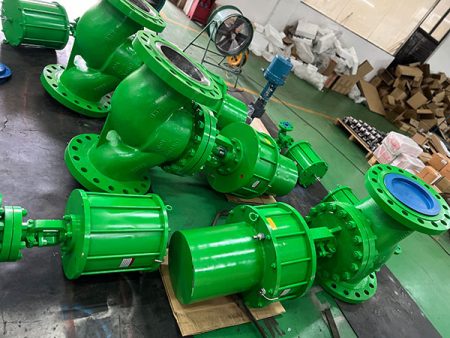
Gate Valve Operation
Gate valves work by moving a metal gate up or down inside. When you turn the handwheel, the gate goes up to let liquid flow. If you turn it the other way, the gate goes down and blocks the flow. The gate presses tightly against the seat to stop leaks. People use gate valves when they want the valve all the way open or closed. These valves are not good for slowly changing how much liquid flows. When the valve is open, liquid moves through easily. This helps keep the pressure steady and saves energy. Gate valves need many turns to open or close, so they work slower than some other valves.
Common Uses for Gate Valves
Gate valves are used in many jobs because they can handle lots of fluids. Water systems use them to control water in big pipes. Factories put them in pipes that carry oil, gas, or chemicals. Water treatment plants use them for main pipes and side pipes. Fire systems use gate valves to shut off parts for repairs. Irrigation systems like them because water can go both ways. Shipyards and power plants use them for steam and cooling water. Gate valves are small, so they fit in tight spaces.
Gate Valve Advantages
Gate valves have many good points that make them popular.
- You can control flow by moving the gate up or down.
- They let liquid go both ways in the pipe.
- They seal tightly, so there are no leaks.
- They last a long time because they are made well.
- When open, they do not slow down the flow much.
- They work with many fluids like water, oil, and chemicals.
- Their small size is good for crowded places.
- They do not cause much pressure loss.
- They are easy to use and do not need much force.
- Liquid flows smoothly through them.
- They help stop water hammer because they open and close slowly.
- You can put them in different ways because of two-way flow.
Gate valves shut off flow well and last a long time. Their design makes them easy to clean and fix. People pick gate valves when they need a strong seal and good flow. Gate valves are tough, seal well, and keep pressure low. These things help systems work better and stop water hammer. Gate valves are a smart pick for water, factories, and businesses.
Gate Valve Disadvantages
Gate valves have some good points, but they also have problems. Knowing these problems helps people pick the right valve for their needs.
Common Drawbacks of Gate Valves:
- Slow Operation:
Gate valves take a long time to open or close. You must turn the handwheel many times to move the gate. This slow speed is bad if you need to shut off flow fast. - Prone to Wear and Tear:
The moving parts inside gate valves rub together. This rubbing makes the parts wear out over time. The gate and seat can get damaged and start to leak. - Not Ideal for Throttling:
Gate valves should not be used to control flow. If left partly open, the gate can shake. This shaking can break the valve and make it not last as long. - Frequent Maintenance Needs:
Gate valves need to be checked and fixed often. Dirt can get stuck inside and make them hard to use. If you do not use the valve much, it can get stuck. - Potential for Leaks:
After being opened and closed many times, gate valves may not seal well. This can let water leak out, especially in old systems. - Large Installation Space:
Gate valves need more room to fit than other valves. The stem and handwheel stick up and need space above the pipe.
Note:
Gate valves can get stuck if not cared for. Stuck valves can slow things down and cost more money.
- Water Hammer Risk:
If you close a gate valve too fast, it can cause a pressure surge called water hammer. This strong force can hurt pipes and other parts. - Limited Use in High-Pressure Systems:
Some gate valves cannot handle very high pressure. The gate might bend or break if the pressure is too strong.
Summary Table: Gate Valve Drawbacks
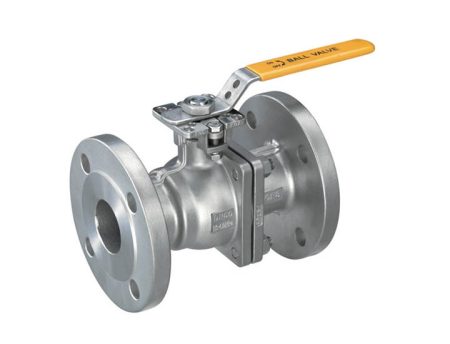
| Disadvantage | Impact on System |
|---|---|
| Slow operation | Delays in emergencies |
| Prone to wear | More repairs and leaks |
| Not for throttling | Shorter valve life |
| Needs maintenance | Higher upkeep costs |
| Large size | Needs more installation space |
| Water hammer risk | Possible pipe damage |
Gate valves are still used a lot, but people should think about these problems before picking them. If you need fast shut-off, less fixing, or have little space, another valve might be better.
Ball Valves Explained
Ball Valve Operation
Ball valves have a round ball with a hole inside. When you turn the handle, the ball spins. If the hole matches the pipe, liquid flows through. If the ball turns and blocks the hole, liquid stops. You only need to turn the handle a little to shut it off. Ball valves seal well, so leaks do not happen. The handle shows if the valve is open or closed. This makes it easy to check the system. Ball valves are good for systems that need quick and strong control.
Common Uses for Ball Valves
Ball valves are used in many places because they are tough and simple. People use them at home to control water pipes. Factories use ball valves for gas, oil, and chemicals. Water plants use them for clean and dirty water. Ball valves help control water in farms and fire systems. Ships and power plants use them for steam and cooling water. Ball valves fit in small spaces and work in big or small pipes. Their design is great for systems that open and close a lot.
Tip: Ball valves work well when you need fast shut-off and a strong seal.
Ball Valve Advantages
Ball valves have many good points for different jobs. They work fast, which helps in emergencies. Their tight seal stops leaks, even after lots of use. Ball valves last long because the ball and seats do not wear out quickly. They are easy to fix and do not need much repair. Ball valves work with water, oil, and chemicals. Their design lets liquid flow smoothly and keeps pressure low.
Ball valves are good for high-pressure systems, but some problems can happen. The table below shows common problems in high-pressure systems:
| Durability Issue | Description | Cause/Contributing Factors |
|---|---|---|
| Leakage | Leaks can happen if the sealing surface gets damaged by high pressure. | High pressure and erosion by liquid can hurt the seal. |
| Increased Opening/Closing Torque | More friction between the ball and seat makes it harder to turn. | High pressure causes friction; the fit may not be right. |
| Shortened Valve Life | Wear and damage from high pressure can make the valve not last as long. | Erosion, heat changes, and shocks from high pressure. |
| Overheating | Too much heat can bend parts and cause leaks. | Hot liquid, not enough cooling, or wrong valve choice. |
| Actuator Failures | Automatic valves can break if motors or wires fail. | Electrical problems, motor issues, or bad settings. |
| Material and Design Issues | Weak materials or bad design can cause leaks and other problems. | Not strong enough, poor resistance to rust, or weak design. |
Ball valves are liked because they are easy to use and safe. Their good points make them a smart pick for many liquid flow systems.
Ball Valve Disadvantages
Ball valves offer many benefits, but they also have some important disadvantages. People should know these issues before choosing ball valves for their systems.
Common Disadvantages of Ball Valves:
- Not Good for Throttling:
Ball valves do not control flow well when left partly open. The ball inside can wear out faster if used this way. This can cause leaks or damage over time. - Possible Jamming:
Dirt or debris can get stuck inside ball valves. When this happens, the valve may jam or become hard to turn. This problem can stop the valve from working when needed. - High Cost:
Ball valves usually cost more than other types of valves. The price can be a problem for large projects or systems with many valves. - Thermal Expansion Issues:
In hot systems, the ball inside can expand. This can make the valve hard to turn or even cause it to stick. Some ball valves need special materials to handle high heat. - Limited Use in Slurry or Thick Fluids:
Ball valves do not work well with thick or dirty fluids. The ball and seats can get scratched or blocked. This can lead to leaks or valve failure. - Potential for Water Hammer:
Ball valves open and close very quickly. This fast action can cause a pressure surge called water hammer. Water hammer can damage pipes and other parts of the system.
Note:
Ball valves need regular checks to make sure they work well. Ignoring maintenance can lead to bigger problems later.
Table: Ball Valve Disadvantages
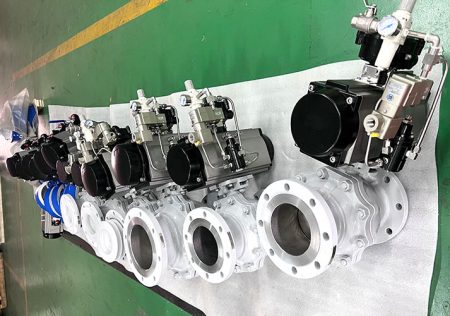
| Disadvantage | Effect on System |
|---|---|
| Not for throttling | Faster wear, leaks |
| Can jam with debris | Hard to operate, may fail |
| Higher cost | More expensive for big projects |
| Thermal expansion | Hard to turn, possible sticking |
| Not for thick fluids | Scratches, leaks, or failure |
| Water hammer risk | Pipe and system damage |
Ball valves remain popular because they are easy to use and seal tightly. Still, users must consider these drawbacks before making a choice. Picking the right ball valve for the job and keeping up with maintenance can help avoid most problems. Ball valves work best in clean systems that need quick shut-off and do not need to control flow slowly.
Gate Valve vs Ball Valve: Detailed Comparison
Operation and Flow
Gate valves and ball valves work in different ways. A gate valve has a flat or wedge-shaped gate. The gate moves up and down to start or stop flow. When the gate goes up, fluid flows easily. There is little resistance when the valve is open. Gate valves work best when fully open or closed. If you use a gate valve to control flow, it can shake. This shaking can make the gate wear out faster.
Ball valves use a round ball with a hole inside. You turn the handle a quarter turn to open it. The hole lines up with the pipe, and fluid flows through. Turn the handle back, and the flow stops. Ball valves open and close very fast. They are great for shutting off flow quickly. Ball valves seal tightly when closed, so leaks do not happen. Ball valves are not good for controlling flow slowly. The ball can wear out if left partly open.
| Feature | Gate Valve | Ball Valve |
|---|---|---|
| Flow Path | Straight, low resistance | Straight, low resistance |
| Operation Speed | Slow (multiple turns) | Fast (quarter turn) |
| Flow Control | Not for precise flow control | Not for precise flow control |
| Best Use | On/off in large pipes | Quick shut-off, frequent use |
Tip: Ball valves close fast and seal well. This makes them better for emergencies.
Both valves let fluid flow both ways. Gate valves are good for systems with steady flow. Ball valves are better for systems that need quick shut-off. Ball valves are faster and easier to use. Gate valves handle big flows with less pressure drop.
Sealing and Leak Prevention
A tight seal is important for any valve. Gate valves use a metal gate that presses against seats. This stops the flow. Over time, metal parts can wear down. This can cause leaks. Gate valves can handle high heat because their seals are metal. They are good for shutting off flow in hot systems. If the gate or seat gets damaged, leaks can happen. Sometimes, leaks in gate valves have caused expensive shutdowns.
Ball valves use soft seats made from PTFE or other plastics. These seats press tightly against the ball. This makes a tight seal and stops leaks. Ball valves are known for sealing well and not leaking. Their soft seats cannot handle very high heat. For hot systems, some ball valves have metal seats. Metal-seated ball valves cost more and may wear out faster than gate valves in extreme heat.
| Valve Type | Seal Type | Leak Risk | Temperature Range | Best For |
|---|---|---|---|---|
| Gate Valve | Metal-to-metal | Higher over time | Up to 400-600°C | High-temp shut-off |
| Ball Valve | Soft seat (PTFE) | Very low | Up to 120°C (standard) | Tight sealing, low leaks |
| Ball Valve | Metal seat | Low | Above 750°F (400°C) | High-temp, tight seal |
Note: Ball valves seal tightly and often need no maintenance. Gate valves work better for high heat shut-off.
Durability and Lifespan
Durability is important for valves. Gate valves have a simple design but can rust and wear out. The moving gate and seats can get damaged by dirt or chemicals. This leads to leaks and repairs. Gate valves cost less at first but need more fixing over ten years.
Ball valves cost more at first but last longer. They need less fixing. Their design protects the seats and ball from damage. In tough jobs, three-piece ball valves let you change seals easily. You do not need to remove the valve from the pipe. This makes the valve last longer and saves money. Ball valves are often replaced, not fixed. Many ball valves work for years without repairs.
New technology has made both valves better. Makers use strong materials like stainless steel and special coatings. Some ball valves use ceramic linings or metal seats for tough jobs. Smart valves have sensors to check for wear. These sensors help plan repairs and make valves more reliable.
| Durability Factor | Gate Valve | Ball Valve |
|---|---|---|
| Corrosion Resistance | Lower, needs frequent checks | Higher, less frequent checks |
| Maintenance Frequency | More repairs over time | Often maintenance-free |
| Lifespan | Shorter in harsh conditions | Longer, especially with upgrades |
| Upgrades Available | Advanced materials, smart sensors | Metal seats, ceramic linings |
Ball valves cost less to fix over ten years. Their design and strength help them last longer.
Both valves are better now with new materials and smart features. Ball valves last longer and need less fixing. This makes them a good choice for many jobs.
Cost and Value
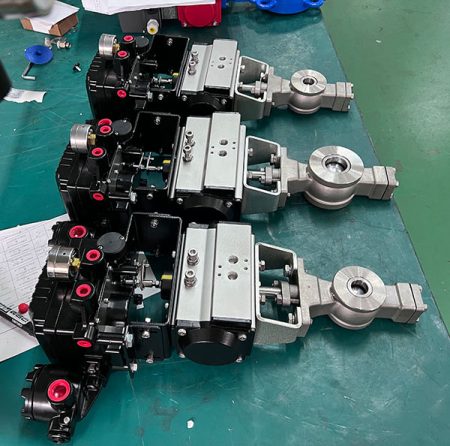
Cost plays a big role when choosing between a gate valve and a ball valve. People often look at the price tag first, but the real value comes from how long the valve lasts and how much it costs to keep it working.
| Factor | Gate Valve | Ball Valve |
|---|---|---|
| Initial Price | Lower | Higher |
| Installation Cost | Moderate | Moderate |
| Maintenance Cost | Higher over time | Lower over time |
| Lifespan | Shorter | Longer |
| Replacement Cost | More frequent | Less frequent |
A gate valve usually costs less to buy. Many large projects use them to save money at the start. Over time, though, the cost can go up. Gate valves need more repairs and may need to be replaced sooner. Ball valves cost more at first, but they last longer and need fewer repairs. This means people often save money in the long run.
Tip: Ball valves give better value for systems that need a tight seal and reliable sealing. They help prevent leaks and lower repair costs.
When looking at cost and value, people should think about the whole life of the valve, not just the first price. A ball valve often gives better value because it lasts longer and keeps a tight seal.
Maintenance Needs
Maintenance is important for any valve. It helps keep the system safe and working well. Gate valves and ball valves have different needs when it comes to care and repair.
Gate Valve Maintenance:
- Needs regular checks for leaks and wear.
- The gate and seat can get damaged by dirt or rust.
- May need to be taken apart for cleaning or fixing.
- Lubrication helps the valve work smoothly.
- More likely to get stuck if not used often.
Ball Valve Maintenance:
- Needs less frequent checks.
- The ball and seats resist dirt and wear.
- Easy to clean and repair without removing from the pipe.
- Rarely gets stuck if used often.
- Seals last longer, so leaks are rare.
| Maintenance Task | Gate Valve | Ball Valve |
|---|---|---|
| Inspection | Frequent | Less frequent |
| Cleaning | Harder | Easier |
| Repair | More often needed | Rarely needed |
| Lubrication | Needed | Seldom needed |
| Seal Replacement | More frequent | Less frequent |
A ball valve needs less work to keep it running. This saves time and money. Gate valves need more care, especially in dirty or old systems.
Note: Regular maintenance helps both types last longer and keeps the tight seal strong.
Automation Options
Automation lets people control valves from far away or with machines. This is important in big factories, water plants, or places where safety matters.
Gate Valve Automation:
- Can use electric or pneumatic actuators.
- Slow to open and close, so not good for fast changes.
- Needs strong actuators because the gate is heavy.
- Used in systems where speed is not important.
Ball Valve Automation:
- Works well with electric, pneumatic, or hydraulic actuators.
- Opens and closes fast, perfect for quick shut-off.
- Needs less power to move the ball.
- Easy to connect to control systems and sensors.
| Automation Feature | Gate Valve | Ball Valve |
|---|---|---|
| Speed | Slow | Fast |
| Power Needed | High | Low |
| Control Options | Limited | Many |
| Best Use | Large, slow systems | Quick, remote shut-off |
A ball valve fits better in modern automated systems. It gives fast response and easy control. Gate valves work best in systems that do not need quick changes.
Tip: For systems that need remote control and a tight seal, a ball valve is often the best choice.
Application Suitability
Picking the right valve depends on the job you have. Gate valves and ball valves work better in different situations. You should think about how often you will use the valve. You also need to know what kind of liquid or gas will go through it. The space you have for putting in the valve is important too.
Where Gate Valves Work Best
Gate valves are good for big pipes and lots of flow. They work best when you keep them open or closed for a long time. Many water systems use gate valves because they let lots of water move with little blockage. Factories use them for main pipes that do not change much. Gate valves are also used in fire safety, watering fields, and power plants.
Gate valves are best when you need steady flow, not fast shut-off.
Where Ball Valves Work Best
Ball valves are great when you need to stop flow fast and keep leaks away. People use ball valves at home because they are easy to turn and stop leaks well. Factories pick ball valves for pipes that open and close a lot or need to stop quickly in an emergency. Ball valves are also good for chemical plants, gas pipes, and places with little room.
Ball valves give strong control and quick action in many systems.
Comparing Application Suitability
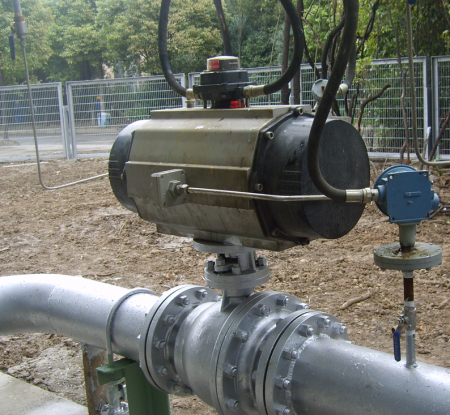
The table below shows which valve works best for each job:
| Application Type | Gate Valve Suitability | Ball Valve Suitability |
|---|---|---|
| Large pipes, high flow | ? Excellent | ? Good |
| Quick shut-off needed | ? Poor | ? Excellent |
| Frequent operation | ? Poor | ? Excellent |
| Tight seal required | ? Good | ? Excellent |
| Flow control (on/off) | ? Good | ? Good |
| Flow control (throttling) | ? Not recommended | ? Not recommended |
| Dirty or thick fluids | ? Good | ? Poor |
| Limited installation space | ? Needs more space | ? Compact |
Key Points for Choosing
- Gate valves are best for steady flow and not moving much.
- Ball valves are better when you need to stop flow fast and stop leaks.
- Both valves are not good for slow flow control.
- Ball valves fit in small spaces and need less fixing.
- Gate valves work better with dirty liquids and do not clog easily.
Tip: Ball valves are best for most homes. Gate valves are better for big pipes in factories.
You should pick the valve that fits your job. Think about how much flow you need, how often you will use the valve, and if you need fast control. The right valve helps your system work well and saves money.
Choosing the Right Valve
Key Factors to Consider
Picking a valve means thinking about many things. You should check how fast it works and how well it seals. Think about how often you need to fix it. Look at how much space you have for the valve. Cost is important too. The kind of liquid, pressure, and how you want to control flow matter. Ball valves are good for homes because they shut off fast and seal tight. Gate valves are better for big pipes with high pressure and not much use. The table below shows how these things compare:
| Factor | Gate Valve Characteristics | Ball Valve Characteristics |
|---|---|---|
| Operation Speed | Slow operation, requires multiple turns | Quick quarter-turn operation |
| Seal Quality | Good but prone to wear over time | Excellent, reliable, tight seal |
| Maintenance Needs | Requires regular maintenance | Low maintenance needs |
| Space Requirements | Requires more installation space | Compact and easy to install |
| Pressure Handling | Suitable for high-pressure, large-diameter pipes | Suitable for typical residential pressures |
| Water Hammer Risk | Higher risk due to slower operation | Lower risk due to quick shut-off |
| Cost | Generally less expensive upfront | Higher initial cost but better longevity |
You should also think about what the valve is made of. Brass ball valves are used in homes because they do not rust. Gate valves are not good for controlling flow slowly. Ball valves help stop water hammer, which keeps pipes safe.
When to Use Gate Valves
Gate valves are best for factories and big jobs. They work well when you need the valve all the way open or closed. These valves let thick liquids like oil or grease move easily. Water systems use gate valves for big pipes that need on or off control. Gate valves handle high pressure and heat very well. They can close off parts of a pipe for fixing. Their design lets liquid go both ways, which helps in many systems.
Gate valves are good for shutting off sections and for places where you do not open or close the valve often.
Big gate valves should stand up straight to stop leaks. Do not put rising stem gate valves underground because they can rust. Make sure the valve is lined up and held well so it lasts longer in tough jobs.
When to Use Ball Valves
Ball valves are best when you need to stop flow fast and keep leaks away. They work great in homes, chemical plants, and oil and gas places. Ball valves control liquid in distillers, heaters, and tanks. Their small size makes them easy to fit in tight spots, like in office buildings. Ball valves do not leak and need little fixing, which saves money and time.
Ball valves are best for jobs that need quick shut-off, little fixing, and strong sealing.
In chemical plants, ball valves handle strong liquids and high-pressure gases. PVC and CPVC ball valves do not get hurt by chemicals and can take high heat. Ball valves are not good for slow flow control or thick liquids because stuff can get stuck and scratch them. For safety, test ball valves after putting them in to make sure they work right.
Application Scenarios
Picking the right valve depends on where it will be used. Different jobs need different features. Here are some examples of how gate valves and ball valves work best in real life.
1. Residential Plumbing
People at home want a valve that shuts off water fast. They also want to stop leaks. Ball valves are good for this. You only need to turn the handle a little. Ball valves last a long time. Plumbers put them on main water lines and under sinks. Older houses sometimes have gate valves. But most new homes use ball valves because they work better.
2. Industrial Applications
Factories and plants use many valves. Pipes that carry oil, steam, or chemicals need strong valves. Gate valves are good for big flows and high pressure. They work well when pipes stay open or closed for a long time. Ball valves are used when workers need to stop flow quickly. They are also good if you need to use the valve a lot. Chemical plants like ball valves because they seal tight and are easy to fix.
3. Water Supply and Irrigation
Water systems and farm pipes need to move lots of water. Gate valves are good here because they let water flow easily. Workers use them to shut off parts of a pipe for fixing. Ball valves can be used in smaller pipes or when you need to stop water fast.
4. Chemical Processing
Chemical plants need valves that do not rust and do not leak. Ball valves made from special stuff can handle strong chemicals and heat. These valves seal well and keep the system safe. Some old pipes still use gate valves. But most new chemical plants pick ball valves because they work better.
5. Emergency Shut-Off
In emergencies, you need to stop flow fast. Ball valves close quickly and stop leaks right away. Fire systems and gas pipes often use ball valves for this reason. Gate valves take longer to close, so they are not as good for emergencies.
Tip: Always pick the valve that fits the job. Ball valves are a top pick for fast shut-off, tight sealing, and easy fixing in many new pipe systems.
| Scenario | Best Valve Type | Reason |
|---|---|---|
| Home plumbing | Ball valve | Quick shut-off, easy to use |
| Factory main line | Gate valve | Handles high flow, stays open |
| Chemical processing | Ball valve | Strong seal, resists corrosion |
| Water supply/irrigation | Gate valve | Full flow, low resistance |
| Emergency shut-off | Ball valve | Closes fast, prevents leaks |
Picking the right valve keeps pipes safe and working well. People should always think about what their job needs before choosing a valve.
Common Misconceptions
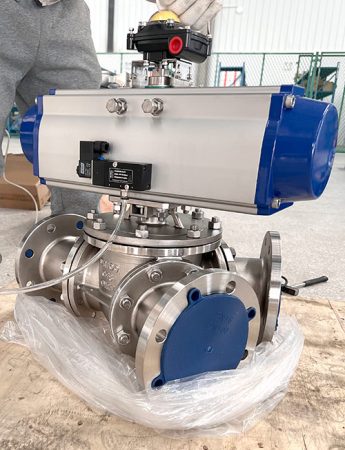
People sometimes get confused about gate valves and ball valves. This can cause mistakes when picking, putting in, or fixing these valves. Some think these valves work great in every job. But in real life, each type has things it cannot do. Knowing the facts helps people pick the right valve and avoid problems.
Gate Valve Myths
Some believe gate valves always stop leaks and control flow well. In water plants, workers use gate valves to turn flow on or off. They should not use them to slow down flow. If left partly open, the gate can wear out or leak. Gate valves open and close slowly. They can break if used the wrong way.
Gate valves need to be put in the right way. You also need enough room to fix them. If you do not plan for repairs, it is hard to fix or change them later.
Some wrong ideas about gate valves are:
- You do not need another valve to work on them safely.
- They can control flow, but they are made for on/off only.
- Bolts that are too long can break or rust the valve.
- No pressure gauges make it hard to check the system.
- Not enough space makes fixing hard.
- Not planning for taking them apart makes repairs tough.
- Putting reducers in wrong causes problems.
- No drain in the valve well can cause trouble.
Gate valves work best with clean, high-pressure liquids. They are not good for thick or muddy liquids. For those, you need a knife gate valve.
Ball Valve Myths
People think ball valves never leak and do not need care. But this is not true. Ball valves need to be checked often to last a long time. Some think ball valves work with any liquid. But thick or dirty liquids can hurt the ball and seats.
| Myth | Reality |
|---|---|
| Ball valves never leak | Seals can wear out and leak |
| No maintenance needed | Checking often keeps them working |
| Good for all fluids | Thick or rough liquids can cause damage |
| All ball valves handle high pressure | Pressure limits depend on the type |
Ball valves do not rust and work well with high pressure. But you must pick the right kind for your liquid and where you use it. Brass ball valves are safe for drinking water if they are certified. But not all brass valves are safe.
Ball valves last longer if you put them in right and take care of them. Following rules like ASME B31.3 helps them work well in factories.
User Doubts
People often have questions about using gate valves and ball valves. Answering these questions helps stop mistakes and makes systems work better.
Common questions about gate valves:
- Should they be all the way open or closed? Do not use them to slow flow.
- Does the way you put them in matter? Yes, they must be lined up right.
- Do they need care? Yes, oiling and checking stops leaks.
- Does storage matter? Bad storage makes them not last as long.
- Should you check electric and moving parts? Yes, checking keeps them working.
- Are tests needed after fixing? Yes, this keeps them safe.
Common questions about ball valves:
- What liquid or gas goes through? The type matters for how long it lasts.
- What is the best way to open or close it? This changes how long it works.
- What heat and pressure can it take? It must match your system.
- How many times will you use it each year? Using it a lot can wear it out.
- How will you use it? The job changes what you need.
- What is it made of? It needs to be strong and not rust.
- What safety marks should it have? Good marks mean it is safe.
- What care does it need? Checking often stops problems.
Knowing these myths and questions helps people pick, put in, and care for valves the right way. Smart choices make systems safer and work better.
Picking the right valve means thinking about how fast it works, how well it seals, how much care it needs, and how much space it takes up. The table below shows these important points:
| Decision Point | Ball Valve | Gate Valve |
|---|---|---|
| Operation Speed | Fast, quarter-turn | Slow, multiple turns |
| Seal Quality | Tight, reliable | Good, but wears over time |
| Maintenance | Low needs | Regular upkeep needed |
| Space Requirement | Compact | Needs more space |
People should look at what their system needs, then:
- Find out what kind of fluid will go through the valve, and check the temperature and pressure.
- Make sure the valve size and material are right for the job.
- Use the maker’s rules for putting in and taking care of the valve.
Ball valves are best if you need to shut off flow fast or use the valve a lot. Gate valves are better for big pipes that stay open most of the time.
FAQ
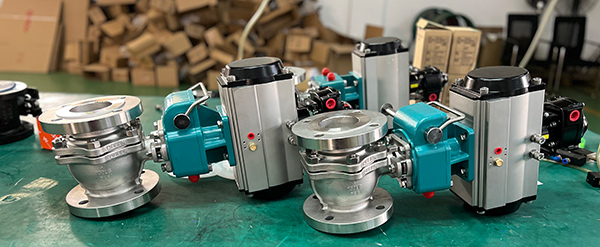
What is the main difference between a gate valve and a ball valve?
Gate valves use a gate to block flow. Ball valves use a ball with a hole. Ball valves open and close faster. Gate valves work better for large pipes with steady flow.
Can ball valves be used for throttling?
Ball valves do not work well for throttling. The ball and seats can wear out quickly. They seal best when fully open or closed.
Which valve lasts longer in most systems?
Ball valves usually last longer. Their design protects the sealing surfaces. Gate valves need more repairs over time, especially with frequent use.
Are gate valves better for dirty or thick fluids?
Gate valves handle dirty or thick fluids better. The gate design resists clogging. Ball valves can jam or scratch with thick liquids.
Do ball valves prevent leaks better than gate valves?
Ball valves seal tightly and prevent leaks. Their soft seats press against the ball. Gate valves can leak after many uses because metal parts wear down.
How often should someone check or maintain these valves?
Gate valves need regular checks for leaks and wear. Ball valves require less maintenance. Checking both types helps keep the system safe.
Can both valve types be automated?
Both gate valves and ball valves can be automated. Ball valves respond faster to remote controls. Gate valves need stronger actuators because they move slower.
Which valve is best for emergency shut-off?
Ball valves work best for emergency shut-off. They close quickly with a quarter turn. Gate valves take longer to close and may not stop flow fast enough.
